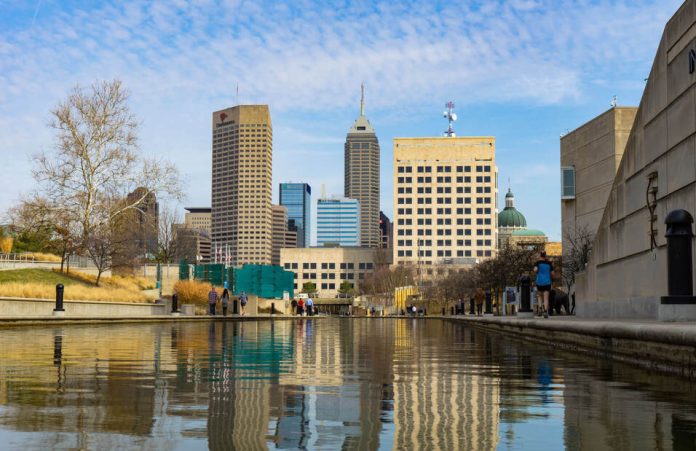INDIANAPOLIS (May 25, 2023) —The Indiana Conservation Partnership (ICP) announced its 2022 conservation accomplishments. The ICP works with Hoosier landowners to provide technical or financial assistance for the implementation of conservation projects. In 2022, landowners supported by the ICP installed more than 47,000 new conservation practices, up over 15,000 from 2021.
“It was so encouraging to see that this year was another record-setting season for Hoosier farmers and landowners,†said Lt. Gov. Suzanne Crouch, Indiana’s Secretary of Agriculture and Rural Development. “These businesses are passionate about protecting and enhancing their lands for generations to come and this year was no different. This record is thanks to the Indiana Conservation Partnership and many others who help our Hoosier farmers and landowners succeed.â€
The Indiana Conservation Partnership report showed that over the last year landowners helped prevent over 1.8 million tons of sediment, over 3.9 million pounds of nitrogen and over 1.9 million pounds of phosphorus from entering Indiana waterways. Cover crops and no-till practices implemented with ICP’s assistance sequestered an estimated 48,000 tons of soil organic carbon, which is the equivalent to the carbon emissions of more than 34,843 cars.
While the term conservation practices can mean many things, in Indiana, some of the most common conservation best management practices are cover crops, nutrient management, residue and tillage management, conservation cover, early successional habitat development/management and grassed waterways.Â
“Indiana’s exceptional agricultural production is rooted in the soil. In a time when extreme weather events seem to be on the rise, keeping soil on the farm, healthy and productive is of paramount importance,†said Indiana Natural Resources Conservation Service (NRCS) Acting State Conservationist David Doctorian. “Indiana farmers are making great strides in adopting soil health principles and systems on their land. More and more Indiana producers are increasing their soil’s organic matter and improving microbial activity thus reducing the need for expensive inputs — all while harvesting better profits and often better yields. Indiana NRCS is pleased to be part of the ICP as they play a pivotal role in supporting producers as they embrace production systems that armor their operations against extreme weather and ensure food security for the United States.â€
Indiana State Department of Agriculture director Don Lamb recognizes the difficulties that come with installing new conservation initiatives but sees the good.
“I know first-hand how timely, expensive and operationally challenging it can be to implement soil conservation practices on farmland. But Hoosier farmers are willing to accept the challenge and strive to make their soil more nutrient rich and healthy for years to come,†said Lamb. “These practices are all voluntary and that is something I think farmers should be recognized for, they don’t have to do them, and they are extra work, but they are willing to do them for the betterment of the soil and our world.â€
The ICP is made up of public and non-profit groups, along with landowners, that work together for the betterment of soil health and water quality. ICP organizations include, Indiana Association of Soil and Water Conservation Districts, Indiana Department of Environmental Management, Indiana Department of Natural Resources, ISDA, Indiana State Soil Conservation Board, Purdue Extension, USDA-Farm Service Agency and USDA-Natural Resources Conservation Service.
The Indiana Conservation Partnership is a crucial part of Indiana’s Nutrient Reduction Strategy, this illustrates the continued success and challenges of conservation and serves as a tool to help set watershed priorities and reduction targets, manage conservation resources and to further stakeholder involvement across Indiana.Â
To find more information on soil and water conservation in Indiana, soil and carbon sequestration, soil conservation trends, Indiana’s work in our three water basins or partnerships between other states in the full report, click here or visit isda.in.gov.Â





